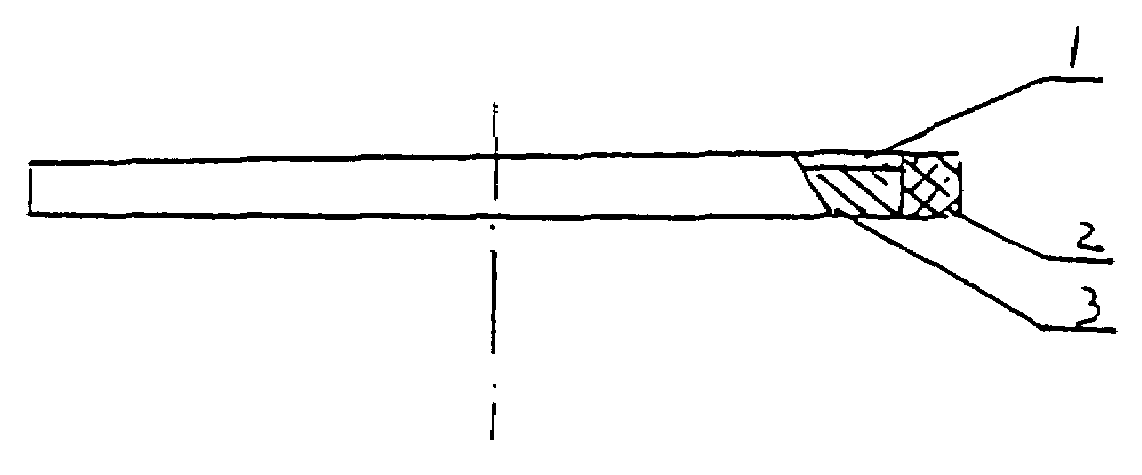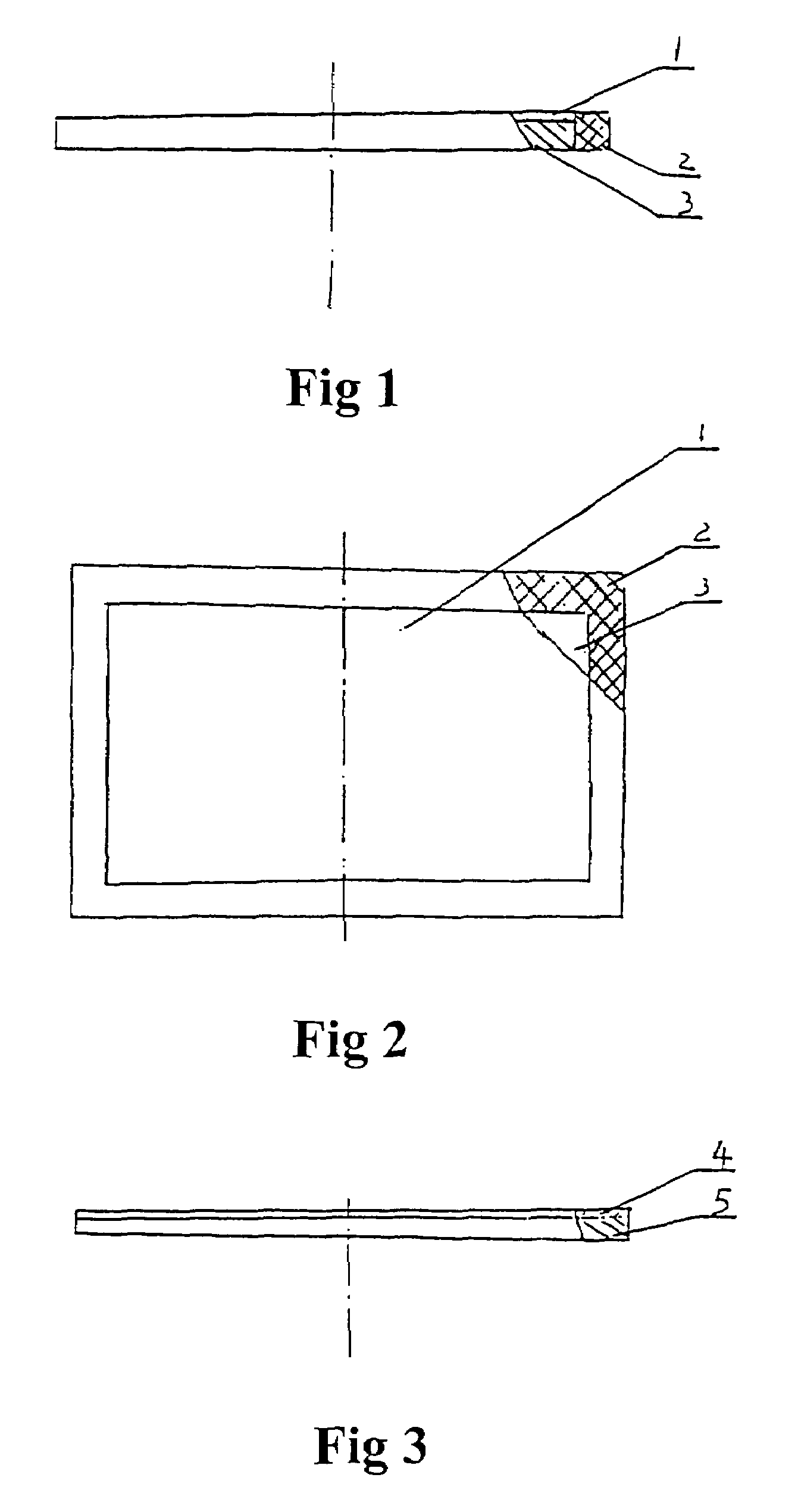Permeable membrane diaphragm of different layers for electroytic cells
a technology of electrolysis cell and membrane, applied in the direction of ion-exchanger, filtration separation, separation process, etc., can solve the problems of short life of the diaphragm, polymeric fibers can hardly form micropores, and danger of explosion, etc., to achieve easy plugging in operation, low cost, and low strength
- Summary
- Abstract
- Description
- Claims
- Application Information
AI Technical Summary
Benefits of technology
Problems solved by technology
Method used
Image
Examples
example 1
[0043]A PTFE plate was extended at two dimensions and treated with an organic surfactant to make a flow-controlling permeable layer-PTFE hydrophilic micro-porous membrane. It has a mean pore diameter of 0.1 μm and a thickness of 0.1 mm; Then, polypropylene was used as raw material to make a diffusion-restricting permeable layer-polypropylene perforate film. Its mean pore diameter is 12 μm and thickness is 1 mm; Then the polypropylene perforate film was covered by the PTFE hydrophilic micro-porous membrane and a glass cloth was used as a protective layer to cover the surface of the PTFE hydrophilic micro-porous membrane. Finally the above-said membranes were bonded to a PTFE frame with an adhesive to obtain the permeable membrane diaphragm of different layers of the present invention. When the current density was 2000 A / m2, temperature was 95° C., and the concentration of NaOH in the electrolytic solution was 120 kg / m3, the voltage of the diaphragm was 0.10 v.
example 2
[0044]A PTFE hydrophilic micro-porous membrane was made by the same method as described in example 1. Its mean pore diameter is 0.5 μm and thickness is 0.15 mm; a diffusion-restricting permeable layer was made from Nylon 6 with mean pore diameter of 15 μm and thickness of 0.8 mm. When the current density was 2000 A / m2, temperature was 95° C., and the concentration of NaOH in the electrolytic solution was 120 kg / m3, the diaphragm, which contained the above-said layers, had a voltage of 0.08 v.
example 3
[0045]Three PTFE hydrophilic micro-porous membranes were made by the same method as described in example 1. The membranes are in the same size. For each membrane, its thickness is 30 μm and a mean pore diameter is 1.5 μm. The three membranes were hot-pressed together to form the flow-controlling permeable layer; A PTFE perforate film was made from a PTFE plate with mean pore diameter of 8 μm and thickness of 0.4 mm. When the current density was 2000 A / m2, temperature was 95° C., and the concentration of NaOH in the electrolytic solution was 120 kg / m3, the voltage of the diaphragm was 0.10 v.
PUM
| Property | Measurement | Unit |
|---|---|---|
| mean pore diameter | aaaaa | aaaaa |
| mean pore diameter | aaaaa | aaaaa |
| current density | aaaaa | aaaaa |
Abstract
Description
Claims
Application Information
 Login to View More
Login to View More - R&D
- Intellectual Property
- Life Sciences
- Materials
- Tech Scout
- Unparalleled Data Quality
- Higher Quality Content
- 60% Fewer Hallucinations
Browse by: Latest US Patents, China's latest patents, Technical Efficacy Thesaurus, Application Domain, Technology Topic, Popular Technical Reports.
© 2025 PatSnap. All rights reserved.Legal|Privacy policy|Modern Slavery Act Transparency Statement|Sitemap|About US| Contact US: help@patsnap.com


